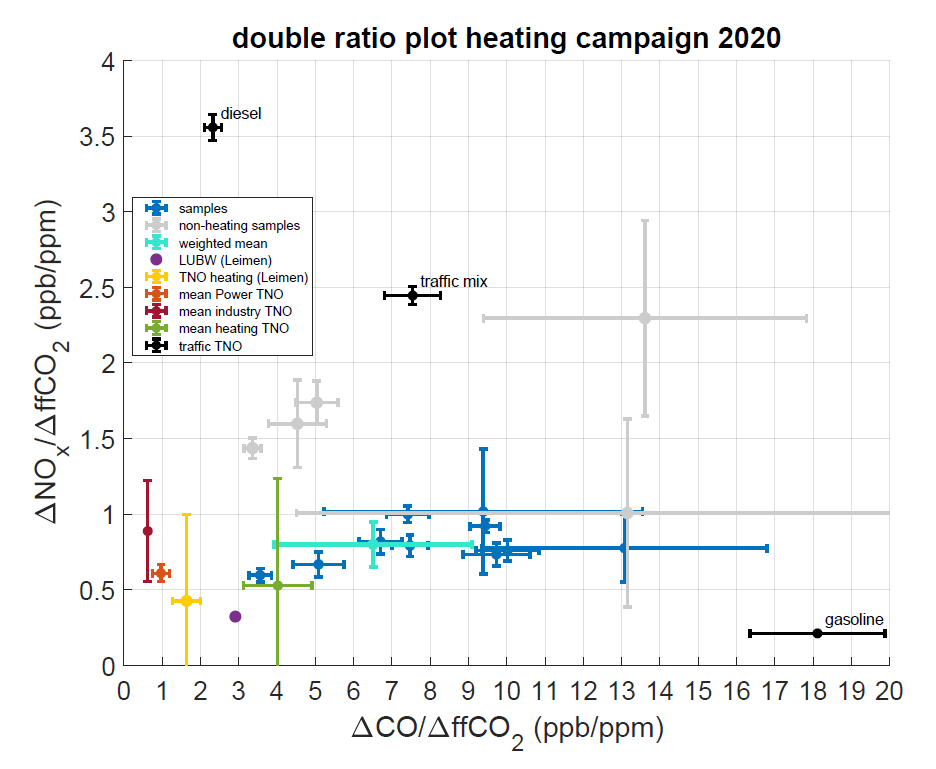File : D2.8
Author : C. Rosendahl (UHEI) et al.
We investigate source sector dominated proxy/ffCO2 ratios with in-situ and total column measurements. The studied proxies are CO, NO2 and NOx. Three independent campaigns were performed: one in-situ campaign targeting the residential heating sector as well as two, one in-situ and one remote sensing campaign for the traffic sector.
For the heating sector, we found a mean ∆CO/∆ffCO2 (heating) ratio of 6.5 ± 2.6 ppb/ppm and a concurrent mean ∆NOx/∆ffCO2 (heating) ratio of 0.8 ± 0.2 ppb/ppm. Both ratios are 2 to 4 times higher compared to inventory-based residential heating emission ratios in the municipality. The mismatch decreases to a 50% underestimation of the inventory when compared to the averaged proxy/ffCO2 emission ratios predicted by the TNO inventory in a 50 km x 50 km surrounding of Heidelberg. Especially the ∆CO/∆ffCO2 (heating) ratio showed a large variability of 40% (1σ). The observed variabilities in the atmospheric ratios are underestimated by the inventory for the CO/ffCO2 emission ratio but overestimated for NOx/ffCO2.
For the traffic sector, the remote sensing campaign was unable to detect ∆proxy/∆XCO2 ratios. The signals from highway traffic emissions were too weak to be detected by total column observations with their current precision. The in-situ campaign performed close to the highway revealed a mean ∆CO/∆ffCO2 (traffic) ratio of 5.21 ± 1.01 ppb/ppm along with a mean ∆NOx/∆ffCO2 (traffic) ratio of 2.24 ± 0.25 ppb/ppm. The experimentally determined ratios are, within their uncertainties, consistent with inventory-based traffic emission ratios if a different gasoline and diesel emissions distribution is assumed.

Figure 1 : Sector-specific double ratios. Samples not used for the weighted average plotted in grey instead of blue. For reference, emission ratios from LUBW (heating, Leimen) and TNO (mean of four sectors in a 50 km x 50 km square around Heidelberg and heating in Leimen) are shown
